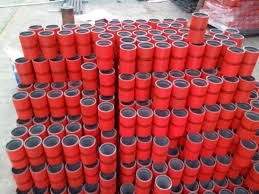- Afrikaans
- Albanian
- Amharic
- Arabic
- Armenian
- Azerbaijani
- Basque
- Belarusian
- Bengali
- Bosnian
- Bulgarian
- Catalan
- Cebuano
- Corsican
- Croatian
- Czech
- Danish
- Dutch
- English
- Esperanto
- Estonian
- Finnish
- French
- Frisian
- Galician
- Georgian
- German
- Greek
- Gujarati
- Haitian Creole
- hausa
- hawaiian
- Hebrew
- Hindi
- Miao
- Hungarian
- Icelandic
- igbo
- Indonesian
- irish
- Italian
- Japanese
- Javanese
- Kannada
- kazakh
- Khmer
- Rwandese
- Korean
- Kurdish
- Kyrgyz
- Lao
- Latin
- Latvian
- Lithuanian
- Luxembourgish
- Macedonian
- Malgashi
- Malay
- Malayalam
- Maltese
- Maori
- Marathi
- Mongolian
- Myanmar
- Nepali
- Norwegian
- Norwegian
- Occitan
- Pashto
- Persian
- Polish
- Portuguese
- Punjabi
- Romanian
- Russian
- Samoan
- Scottish Gaelic
- Serbian
- Sesotho
- Shona
- Sindhi
- Sinhala
- Slovak
- Slovenian
- Somali
- Spanish
- Sundanese
- Swahili
- Swedish
- Tagalog
- Tajik
- Tamil
- Tatar
- Telugu
- Thai
- Turkish
- Turkmen
- Ukrainian
- Urdu
- Uighur
- Uzbek
- Vietnamese
- Welsh
- Bantu
- Yiddish
- Yoruba
- Zulu
pup joint specifications
Understanding PUP Joint Specifications
PUP joints, or Pup Joints, are a crucial component used in various industries, particularly in oil and gas drilling. These short pieces of pipe serve several functions, including allowing for adjustments in the total length of a pipe string, aiding in directional drilling, and compensating for thermal expansion. Understanding the specifications of PUP joints is essential for ensuring the safety and efficiency of drilling operations.
Materials and Construction
PUP joints are typically manufactured from high-quality steel to withstand the demanding conditions of drilling. Common materials include carbon steel and alloy steel, which are chosen based on their strength, corrosion resistance, and ability to withstand harsh environments. The manufacturing process usually involves forging and threading, ensuring that the joints can be securely connected to other components of the drilling assembly.
Dimensions and Sizing
PUP joints come in various sizes, with specifications based on the requirements of the drilling operation. The standard lengths can vary, often ranging from 2 to 5 feet; however, they can be customized to meet specific needs. The outer diameter and wall thickness are critical factors that influence the joint's performance under pressure. Standard sizes typically correspond to common pipe sizes, and it is vital to select the appropriate PUP joint to maintain integrity and prevent leaks.
Thread Types
pup joint specifications

The thread type on PUP joints is another significant specification. Different thread standards, such as American Petroleum Institute (API) and proprietary designs, are used based on the application and compatibility with other pipe components. API threads, for instance, are well-known for their reliability, while proprietary threads may provide enhanced performance for specific applications. Properly installed and maintained threads are crucial for preventing fluid leaks and ensuring the overall safety of the drilling operation.
Pressure Ratings
Each PUP joint is assigned a specific pressure rating, which denotes the maximum pressure the joint can withstand without failure. This rating is influenced by factors such as material properties, wall thickness, and thread design. It is vital for engineers and operators to match the PUP joint's pressure rating with the operational conditions to avoid catastrophic failures that could jeopardize safety and result in costly downtime.
Applications
In the oil and gas sector, PUP joints are extensively used in drilling operations, particularly in deep-water drilling where flexible and adaptable connections are essential. They are also utilized in completion operations, where adjustments to the length and angle of the piping are necessary. Beyond the oil and gas industry, PUP joints find applications in construction, mining, and other fields that require robust pipe connections.
Conclusion
Understanding PUP joint specifications is fundamental for engineers and technicians involved in drilling operations. With their essential role in ensuring the integrity and functionality of pipe assemblies, attention to materials, dimensions, thread types, and pressure ratings cannot be overstated. Proper selection and maintenance of PUP joints contribute to the efficiency, safety, and success of drilling operations, making them an indispensable component in the industry. As technology advances and drilling practices evolve, continuous learning about PUP joint specifications will remain crucial for professionals in the field.
-
Well Casing Extension Couplings – Applications and InstallationNewsJun.06,2025
-
Types of Crossover Subs in Drilling & CompletionNewsJun.06,2025
-
Key Features of High-Quality Tubing Pup JointsNewsJun.06,2025
-
Installation and Maintenance Tips for Steel Couplings for PipeNewsJun.06,2025
-
How to Select the Right Pup Joint for Oil & Gas OperationsNewsJun.06,2025
-
Applications of Stainless Steel Pipe CouplingsNewsJun.06,2025







